Why You Need To Think Before Buying A Yoga Mat?
Yoga is not just a physical exercise; it is a journey towards holistic well-being. Central to this journey is your yoga mat, the foundation upon which you'll build your practice. Using your own yoga mat reduces exposure to sweat, dirt, and germs commonly found on shared mats in yoga studios. This promotes better hygiene and reduces the risk of skin infections or allergies.
But with so many options available, selecting the right yoga mat can be overwhelming. Fear not! Here's a comprehensive guide to help you choose the perfect yoga mat for your needs and preferences.
Here, we have curated a list of The Top 6 Yoga Mats for You.
Lifelong LLYM101 Yoga mat, EVA Material, 10mm Grey Anti Slip for Gym Workout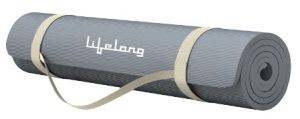 Amazon Basics 13mm Extra Thick NBR Yoga and Exercise Mat with Carrying Strap
Amazon Basics 13mm Extra Thick NBR Yoga and Exercise Mat with Carrying Strap 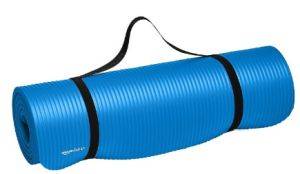 Wiselife Printed Yoga Mat + Yoga Strap TPE Material 6mm Extra Thick Extra Long & Wide
Wiselife Printed Yoga Mat + Yoga Strap TPE Material 6mm Extra Thick Extra Long & Wide 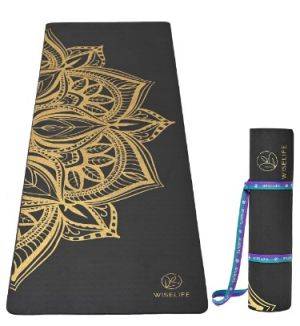 Boldfit Yoga Mats NBR Material with Carrying Strap, 8mm Extra Thick Exercise Mats
Boldfit Yoga Mats NBR Material with Carrying Strap, 8mm Extra Thick Exercise Mats 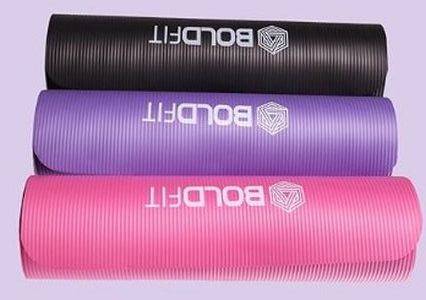 SOLARA Premium Large Yoga Mats, 6mm Thick, Eco-Friendly Non-Slip Yoga Mat, 6 feet
SOLARA Premium Large Yoga Mats, 6mm Thick, Eco-Friendly Non-Slip Yoga Mat, 6 feet 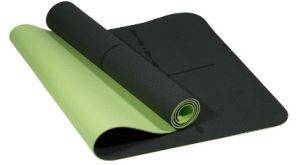 Bodylastics Yoga Mat with Carry Bag TPE 6ft, 6mm Large Size Anti Slip & Anti Tear
Bodylastics Yoga Mat with Carry Bag TPE 6ft, 6mm Large Size Anti Slip & Anti Tear 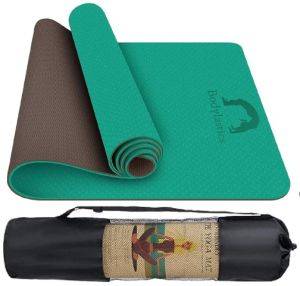
Key factors to consider when buying a yoga mat:
Consider Thickness: The thickness of your yoga mat impacts comfort and stability. Thicker mats provide more cushioning, ideal for gentle or restorative yoga. On the other hand, thinner mats offer better stability and connection to the ground, which is preferable for active styles like Vinyasa or Ashtanga.
Material Matters: Yoga mats come in various materials, each with its texture, grip, and eco-friendliness. PVC mats offer good grip and durability but may not be environmentally friendly. Natural rubber mats provide excellent grip and are more sustainable. Consider materials like TPE (Thermoplastic Elastomer) or cork for eco-friendly options.
Texture for Traction: The texture of your mat affects grip and feel. Some mats have a smooth surface, while others have a textured or sticky surface to prevent slipping. If you tend to sweat during practice, opt for a mat with a grippy texture to maintain traction in various poses.
Size Matters: Ensure your yoga mat is long and wide enough to accommodate your height and provide ample space for movement. Most mats are around 68-72 inches long and 24 inches wide, but taller individuals may require longer mats. Consider a wider mat if you prefer extra room for movement or have a larger frame.
Portability and Weight: If you plan to carry your mat to yoga classes or travel with it, consider its weight and portability. Lightweight mats are easier to transport but may sacrifice thickness and cushioning. Look for mats that strike a balance between portability and comfort, especially if you commute or travel frequently.
Price vs. Quality: While budget is a consideration, prioritize quality and features that align with your needs. Investing in a high-quality yoga mat may cost more upfront but will offer durability, performance, and longevity in the long run. Consider it an investment in your practice and well-being.
Environmental Impact: If sustainability is important to you, opt for eco-friendly yoga mats made from natural, biodegradable, or recycled materials. Look for certifications like OEKO-TEX or GOTS to ensure your mat meets environmental standards without compromising performance.
Read Reviews and Recommendations: Before making a purchase, research and read reviews from other yoga practitioners. Seek recommendations from instructors or fellow students to gain insights into different yoga mats' performance, durability, and overall satisfaction.
In conclusion, selecting the right yoga mat requires thoughtful consideration of factors such as thickness, material, texture, size, portability, price, and environmental impact. By weighing these considerations and exploring different options, you can find the perfect yoga mat that enhances your practice and supports your journey towards well-being. Happy mat hunting!

